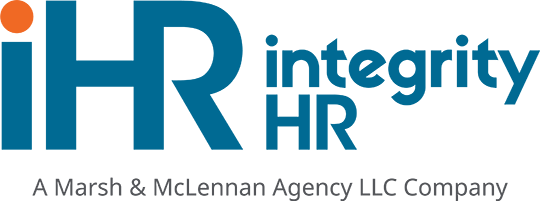You’ve heard it before, and you’ll hear it again – every business needs a strategic plan.
The most successful companies develop and implement an effective strategic plan to help them pursue their organizational goals. But, even the best strategic plan won’t be very effective if the human resources function isn’t in alignment with it.
A Strategic HR Plan is a tool to help businesses align their organizational goals with their HR capabilities, and every business should have one in place to support the growth outlined in their strategic plan.
If you haven’t developed a Strategic HR Plan for your business (or if you’re still not quite sure what it is!), don’t worry!
Below we share our 5 Steps To Developing A Strategic HR Plan to help you effectively support and achieve your organization’s strategic goals.
If you’re interested in learning more about developing a Strategic HR Plan or a Strategic Plan for your business, schedule an appointment with one of our HR professionals or give us a call at 877-753-0970.
5 Steps To Developing A Strategic HR Plan
What is a Strategic HR Plan?
A Strategic HR Plan helps organizations to align human resources to corporate strategy. It is an essential planning document built upon the corporate mission, vision, values, and goals established in the strategic business plan.
It provides information on how the HR function will support the goals and strategies of the organization, while also ensuring that HR planning and practices are consistent.
The ideal Strategic HR Plan outlines how the gaps between present and future capabilities will be addressed, enabling businesses to effectively pursue their company goals.
Why develop a Strategic HR Plan?
In most organizations, managers have a responsibility to fulfill expectations in the areas of corporate governance, transparency of policies, accountability, and economic efficiency.
For your business to be successful in these areas, you need to have the right people, with the right skills, in the right place, at the right time to carry out the strategy.
A comprehensive Strategic HR Plan will ensure that you have the capacity to deliver on strategy and the ability to monitor progress towards your organization’s goals. It should also establish:
- HR practices that are consistent across the organization
- Training and skill development policies that are linked to strategy
- Succession planning processes that identify and minimize capability risks
How do you create a Strategic HR Plan?
The process for developing a Strategic HR Plan begins by identifying where your organization is now in the life-cycle of an enterprise: the start-up stage, the growth stage, the mature stage, or the decline stage.
Once you’ve decided where your company is today, formulate a clear picture of your company’s future along with ways to get there. Your Strategic HR Plan will be built upon the foundation of this strategic business plan.
Step 1: Identify Future HR Needs
Using your business’ strategic plan as a guide, identify the future HR needs of the organization. Ask questions like:
- What is the nature of our work?
- What type of culture will support productivity?
- What skills do we need to deliver results?
- Where are those skills and how are we tapping into them?
- How large is our organization?
- What systems and processes do we need?
- How are we making sure peoples’ skills match our needs?
- What risks are associated with this future?
Step 2: Consider Present HR Capabilities
Now consider your company’s present HR situation by asking questions like:
- With the future in mind, what is our current capability?
- How are we doing against benchmarks?
- What are our strengths and weaknesses?
- Are there legislative requirements we need to consider?
- What are we doing well now, that we need to do more of in the future?
- Where do the risks lie?
- What HR issues may prevent us from getting to the future?
- What current systems will support or hinder our progress?
Step 3: Identify Gaps Between Future Needs & Present Capability
Compare your future HR needs from step 1 with your present HR capabilities from step 2, and identify any significant gaps that appear.
Gaps can develop in a number of areas including policies and procedures, capability, and resource allocation. Start with these questions:
- Where do significant gaps appear between the present and future?
- How can these gaps be classified?
Step 4: Formulate Gap Strategies
Next, work to develop strategies that will address the gaps you identified in Step 3. These gap strategies may affect:
- Job/Work Design
- Selection/Staffing
- Performance Management
- Compensation/Rewards
- Training/Development
- Employee Relations
- Safety and Health
- Workforce Diversity
Not all gaps will be of the same strategic importance, so you will need to set priorities for addressing them.
For example, imagine you discovered a need to update your HR information system. Investing in a new system would provide you with employee progress data that you deemed essential for your future company goals.
The need for an upgraded HR information system should be prioritized as urgent because it’s necessary to succeed in your long-term strategic plan.
Questions you can ask to help you determine the priority of your needs include:
- What are the top priorities?
- Where can we experience rapid progress?
- How do these strategies work with our budgets?
- What is the degree of change needed?
Step 5: Share & Monitor The Plan
Sharing the Strategic HR Plan with your senior leadership and those connected to the HR function of your organization is a crucial component of its success. The more your team understands and supports the plan, the more empowered they will be to help the company achieve its goals.
It’s also important to monitor the progress of the Strategic HR Plan you develop and to communicate successes or modifications to your team.
At the very least, you should review the plan on an annual basis to verify that the goals on which the plan was based are still accurate and to make adjustments as needed.
Developing Your Plan
Developing a comprehensive Strategic HR Plan is an essential investment in helping your company achieve its goals.
A Strategic HR Plan aligns your corporate mission with your business plan, ensuring you have the capacity to deliver on strategy as you pursue your organization’s goals.
If you’re interested in learning more about developing a Strategic HR Plan or a Strategic Plan for your business,schedule an appointment with one of our HR professionals or give us a call at 877-753-0970.











